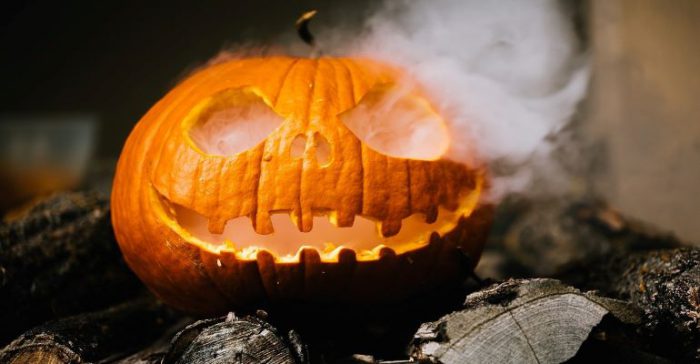Alex Schultz, ERS
With fall comes cooler weather, apple cider, and Halloween décor: 151.95 million Americans plan to carve a pumpkin this year. Jack-o-lanterns provide a festive look to any front door, but they also represent a significant source of greenhouse gas emissions as they decompose. Talk about spooky!
When a pumpkin ends up in a landfill, it decomposes anaerobically, releasing methane, a greenhouse gas 34 times more powerful than carbon dioxide. A UK study estimates that 2,800 kg of CO2-equivalent greenhouse gas is released for every ton of food waste in a landfill. This means that a 20-pound pumpkin will release 25.4 kg of CO2 equivalent greenhouse gas if it ends up in a landfill. If 150 million Americans buy a 20-pound pumpkin and subsequently toss it at the end of the season, 381,000 tons of CO2 equivalent greenhouse gases will end up in the atmosphere – the same as driving a passenger car 943,069,307 miles.
But if a pumpkin is composted instead, it will break down more appropriately – plant matter in a compost pile decomposes aerobically rather than anaerobically because of the access to oxygen. This process releases CO2 rather than methane, leading to a lower global warming potential. Eventually, the compost created will provide valuable nutrients to soil – which can be used to grow more pumpkins!
Most consumers buy pumpkins just for decoration and end up tossing the whole thing. Technically, an entire pumpkin is edible, but the most commonly eaten parts are the seeds (try them roasted for a delicious, crunchy snack) and pureed flesh (pureed pumpkin is what you’d buy in a can from the store to make pumpkin pie, bread, muffins, and more). Reducing the amount of pumpkin that ends up in the trash or compost will reduce the eventual emissions, because less plant matter needs to decompose.
Pumpkins are just one part of this spooky season, and there is not one set way to celebrate an environmentally conscious Halloween. It’s impossible for the average consumer to have zero environmental impact, but we can all work to reduce our negative impact. Jack-o-lanterns are not evil, but it is important to consider where our pumpkins are sourced and how they are disposed of. The environmental impact of this holiday goes beyond pumpkins – how can you limit the greenhouse gas emissions involved in your decorations, meals, costumes, and more?
